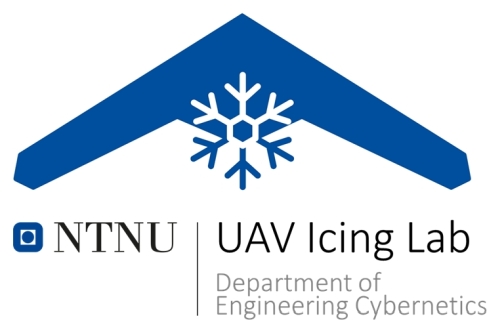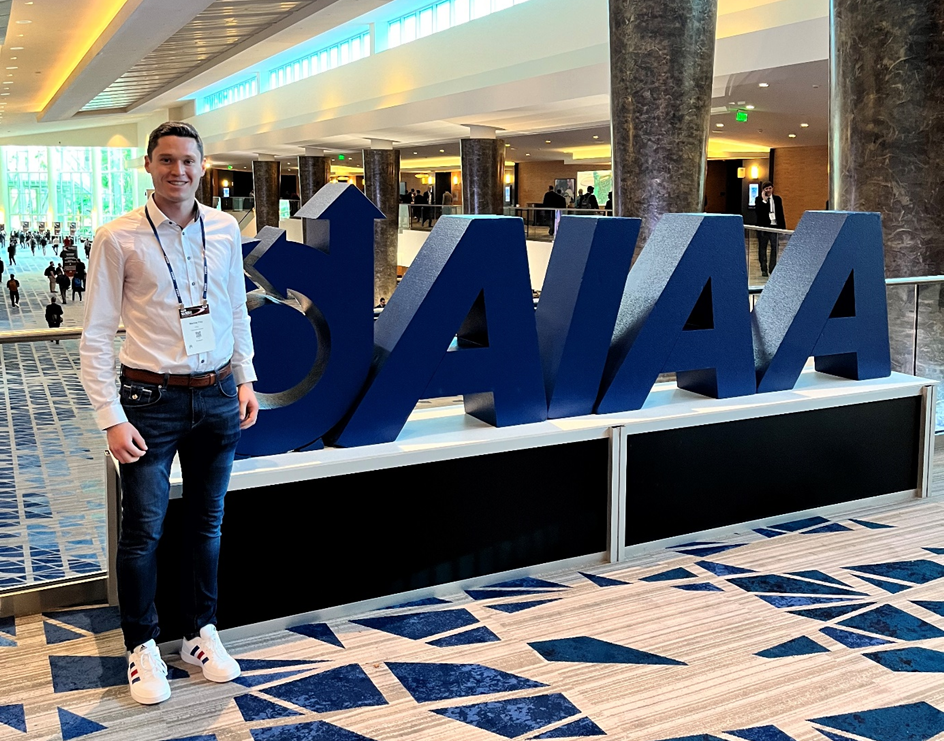In a recent presentation at the AIAA SciTech Forum and Exposition in Orlando, master student Markus Frey had the pleasure of representing the NTNU UAV Icing Lab. In this session, we explored innovative research set to revolutionize the safety and reliability of Unmanned Aerial Vehicles (UAVs) operating in challenging weather conditions. The focus was an Electro-Thermal Ice Protection System (ETIPS) designed specifically for UAV propellers, integrating both experimental and numerical investigations.
Propeller Sensitivity to Ice Accretion:
Propellers, with their high rotation rates and small size, are particularly sensitive to ice accretion. The consequences include a substantial reduction in thrust generation, increased torque, and potential dangers associated with ice shedding. Traditional ice protection systems, well established in manned aviation, present unique challenges when adapted for UAVs due to energy limitations and strict mass constraints. Our research is focused on ETIPS, specifically designed for UAV propellers. These systems operate on the principle of resistive heating, keeping the critical surface spots above the freezing temperature.
Balancing Act – Ice-Free Propellers and Structural Integrity:
One often-overlooked aspect in anti-icing investigations is the thermal impact on propeller structures, particularly those made from composite materials. While composites offer advantages in terms of weight, stiffness, and strength, they are sensitive to high structural temperatures. The delicate balance between electro-thermal heating to keep propellers ice-free and preserving the structural integrity of composite materials presents a major challenge.
Experimental and Numerical Investigations:
Our study builds on previous research and introduces protected propellers for experimental analyses, aiming to provide a more comprehensive examination of the internal temperature distribution. The goal is not only to keep the propeller surface ice-free but also to maintain low internal temperatures, ensuring the longevity of composite materials. Numerical conjugated heat transfer simulations, utilizing ANSYS FENSAP-ICE, play a crucial role in predicting temperature distributions within the propeller. These simulations, validated against literature and the experimental data, provide insights into the ETIPS performance under realistic in-flight conditions.

Two Optimization Strategies:
In optimizing our Ice Protection System, two key strategies emerge from our study. The first involves integrating additional ETIPS modules along the propeller’s surface, strategically placed between the glass fiber layers. This aims to maintain more of the upper surface above freezing temperatures, preventing runback ice accumulation. The second strategy explores the impact of material composition, specifically introducing a thin copper layer into the propeller structure. This alteration enhances heat conductivity, reducing heat resistance, and improving both ice prevention and heat dissipation. These strategies, guided by numerical simulations aligned with experimental conditions, offer promising results for enhancing the effectiveness of ETIPS and ensuring safer UAV operations in challenging weather conditions.
Conclusion:
In summary, our research on ETIPS for UAV propellers introduces innovative strategies. By incorporating additional ETIPS modules and exploring material enhancements like a thin copper layer, we aim to improve ice prevention and heat distribution. These findings contribute to the ongoing effort to enhance the operational safety of unmanned aerial vehicles in challenging climate conditions. Our research takes us a step closer to improve ice protection systems, ensuring that UAVs work reliably.
Reference: Frey, M., Müller, N.C., Wallisch, J., Hann, R. (2023). UAV Icing: Validation of a numerical model to calculasite the Temperature of an Ice Protection System for a Propeller of a UAV. AIAA SCITECH Forum. AIAA 2024-0871.doi.org/10.2514/6.2024-0871
Text: Markus Frey

